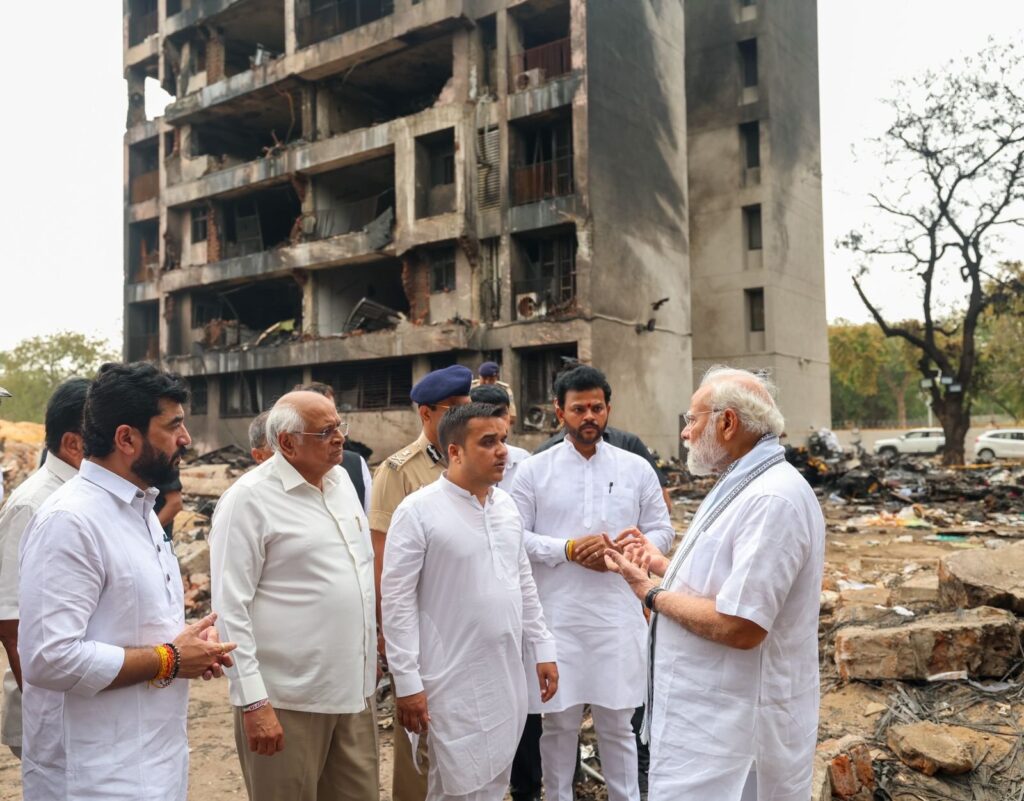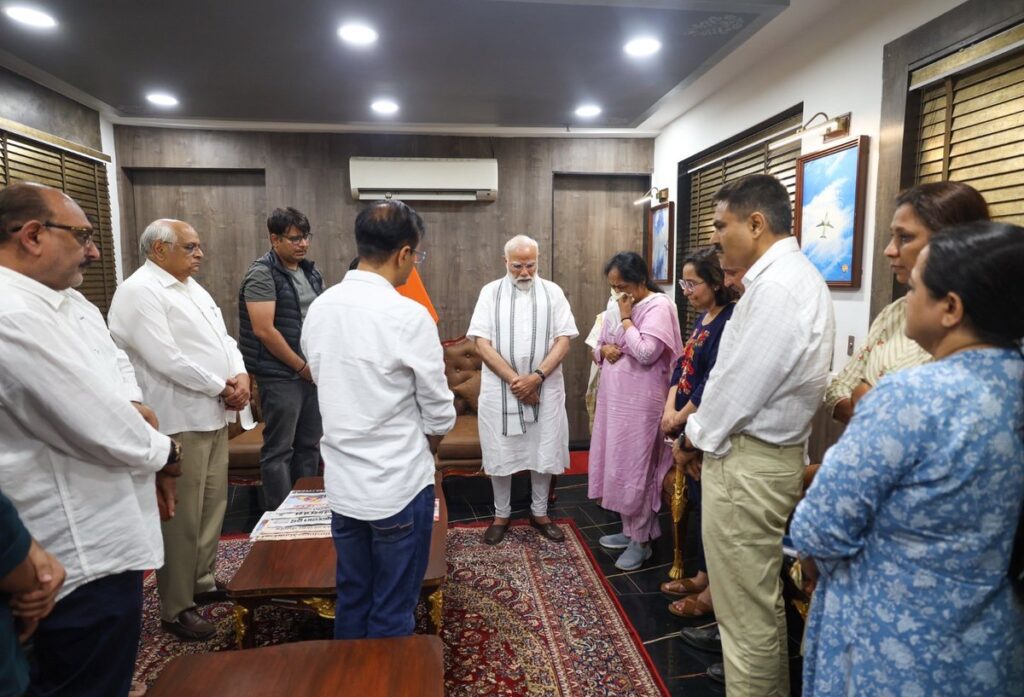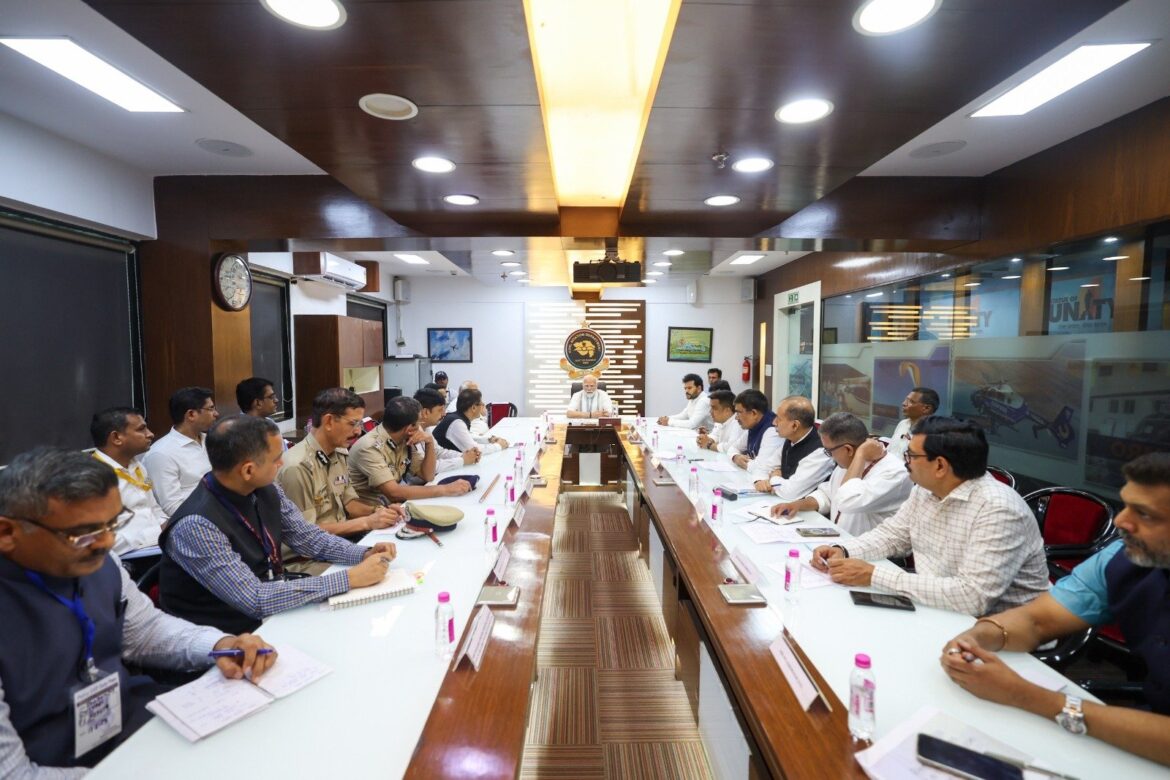The intensive investigation into the catastrophic crash of Air India Flight AI171 in Ahmedabad, India, on June 12, 2025, is rapidly accelerating, with critical breakthroughs in evidence recovery offering the first concrete clues into the disaster that claimed 241 lives aboard and at least 28 on the ground.
India’s Prime Minister Narendra Modi visited the crash site on June 13 along with Gujarat Chief Minister, Bhupendra Patel and other top officials. During his visit, PM Modi visited the family of Vijay Rupani, former Gujarat Chief Minister, who was killed in the crash. The Prime Minister also held a chaired a review meeting with top authorities at the Ahmedabad Airport.

As the nation mourns, a multi-agency international team of experts is meticulously piecing together the final moments of the Boeing 787-8 Dreamliner. The Gujarat Anti-Terrorist Squad (ATS) confirmed the recovery of the aircraft’s Digital Video Recorder (DVR) from the extensive crash site debris. This vital component, which records visual data from the cockpit and surrounding areas, is expected to provide unprecedented insight. Its retrieval follows the earlier recovery of the “black box,” a common term for the Flight Data Recorder (FDR) and Cockpit Voice Recorder (CVR). Together, these devices are the bedrock of any aviation accident investigation, holding recorded flight parameters, system performance, and all cockpit audios.
AAIB Leads, International Expertise Mobilized:
The formal investigation is being spearheaded by India’s Aircraft Accident Investigation Bureau (AAIB), which has convened a high-level committee of multidisciplinary experts to ensure a comprehensive and rigorous inquiry into aviation safety. The probe is significantly bolstered by international assistance, with US investigators from the National Transportation Safety Board (NTSB) and Federal Aviation Administration (FAA) providing their expertise. Representatives from Boeing, the aircraft manufacturer, and GE Aerospace, the engine manufacturer for the 787, are also actively participating, crucial for understanding the aircraft’s design and operational integrity.

Four Scenarios Under Scrutiny, Bird Strike Dominant Theory:
While no definitive cause has been confirmed, investigators are actively exploring four probable scenarios for the crash. Aviation analysts are drawing strong parallels between the AI171 disaster and a pattern of rare but catastrophic aviation incidents that occur during the critical takeoff phase. Initial reports indicating a sudden loss of power in both engines after the aircraft descended from a low altitude of approximately 600 to 800 feet have led to strong suspicions of a severe bird strike.
Experts suggest that the combination of a heavy fuel load, high ambient temperature (around 43°C), and the possibility of an intersection takeoff—a maneuver that reduces available runway length—could have drastically reduced the aircraft’s margin for error. If the Dreamliner’s engines ingested large birds simultaneously while still climbing out under such adverse conditions, even a twin-engine jet like the 787 might have been unable to sustain flight. This mirrors the underlying dynamics of events like the “Miracle on the Hudson” (US Airways Flight 1549 in 2009) and the more tragic Eastern Air Lines Flight 375 in 1960.
Focus on Crew Actions and Environmental Factors:
The investigation will also meticulously examine the crew’s actions. Analysts highlight that flap retraction timing, thrust settings, and V2 (takeoff safety speed) calculations are particularly sensitive during summer departures with full payloads. Any procedural misstep, such as retracting flaps too early, could potentially trigger a stall. While the captain reportedly had extensive experience, the first officer’s comparatively lower flight hours (just over 1,100) will likely be a factor considered in reconstructing cockpit decision-making.
Witness accounts from airport staff and local residents reported seeing the aircraft struggling to gain altitude, followed by an explosion and thick smoke near Meghani Nagar. The confirmed “mayday” call sent moments before impact strongly suggests that the pilots were aware of a major malfunction but lacked the altitude or time for any recovery attempt.
Modern Aircraft, Rare Failure, Systemic Implications:
The Boeing 787-8 Dreamliner, introduced in 2011, has maintained a robust safety record with no prior fatal crashes, making this incident particularly unsettling for the aviation community. This rare catastrophic failure so early in flight has prompted urgent calls for a thorough technical review by authorities.
The Directorate General of Civil Aviation (DGCA) is working closely with the AAIB. Investigators are meticulously combing through the wreckage and analyzing all retrieved data to establish definitively whether foreign object ingestion, a procedural lapse, or a mechanical defect precipitated the crash.
Aviation safety analyst Simon Ashley Bennett emphasized that while commercial aviation is extraordinarily safe, “edge-case risks — especially during takeoff and landing — remain.” He noted that approximately 80 per cent of fatal accidents occur during these phases. “Birds, heat, miscalculated weights — any of these individually might be survivable. But once they stack, even the safest aircraft becomes vulnerable,” Bennett stated.
If bird ingestion is confirmed as the root cause, renewed focus will undoubtedly fall on airport wildlife hazard management, including bird deterrence systems, radar tracking, and more stringent takeoff protocols during peak migratory seasons or in high-density zones.
As the investigation progresses, the findings will be crucial not only for providing closure to the bereaved families but also for shaping future aviation safety protocols globally.






